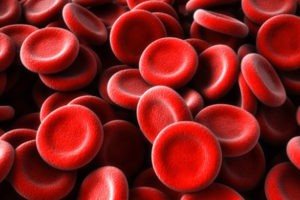
Recently Diagnosed or Relapsed? Stop Looking For a Miracle Cure, and Use Evidence-Based Therapies To Enhance Your Treatment and Prolong Your Remission
Multiple Myeloma an incurable disease, but I have spent the last 25 years in remission using a blend of conventional oncology and evidence-based nutrition, supplementation, and lifestyle therapies from peer-reviewed studies that your oncologist probably hasn't told you about.
Click the orange button to the right to learn more about what you can start doing today.
- You are here:
- Home »
- Blog »
- Multiple Myeloma »
- Myeloma Chemotherapy- Myelosuppression
Myeloma Chemotherapy- Myelosuppression

Myelosuppression due to chemotherapy is one of the main challenges of conventional MM management (chemotherapy). Ironically, we MM survivors need to kill stem cells (MM) yet killing stem cells can be a problem for us.
Hi David- I could use some more of your insight regarding my Multiple Myeloma treatment. My Myeloma levels have been stable, but the medications continue to suppress my blood counts aka I face myelosuppression.
This morning my hemoglobin was down to 9.2, the lowest reading I have ever had, even though I had a shot of aranesp (Sp). The shot never seems to bring my hemoglobin any higher that 10.4.
The doctor is fine with this but I am not. I feel like an old man when my numbers get so low, although I keep pushing myself to exercise almost daily between weight training and running, although my running is now a slow shuffle of about 12.5 minutes per mile and it’s hard work to go up more than one flight of stairs.
I am still not on board with having a stem cell transplant, especially after having a consultation with Dr. Berenson. Is there anything you can suggest that might help? MM Patient
Dear MM Patient-
I am sorry to read of your therapy challenges. Myelosuppression due to chemotherapy is one of the main challenges of conventional MM management (chemotherapy). Ironically, we MM survivors need to kill stem cells (MM) yet killing stem cells can be a problem for us.
- MM Survivor
- MM Coach
- Director PeopleBeatingCancer
Recommended Reading:
“What is myelosuppression?
Myelosuppression describes the disrupted function of stem cells in the bone marrow. The bone marrow is responsible for making red and white blood cells and platelets.
As the bone marrow cannot function as it usually does, a person with myelosuppression may develop blood disorders, such as anemia, neutropenia, and thrombocytopenia. All of these blood disorders result from fewer red and white blood cells and platelets…
Anemia
Anemia, which is a low number of red blood cells, is a condition that can cause the following symptoms:
- fatigue
- weakness
- dizziness
- increased heart rate
- shortness of breath
- pale skin, lips, and nail beds
Leukopenia
Leukopenia is a low white blood cell count. Without adequate white blood cells, the body will find it more difficult to fight infections.
The symptoms of leukopenia include:
Thrombocytopenia
Low platelets, called thrombocytopenia, can cause the following symptoms:
- easy bruising and bleeding of the nose, gums, and mouth
- blood in the urine and the stool
- small red spots on the skin, known as petechiae
Learn more about thrombocytopenia.


